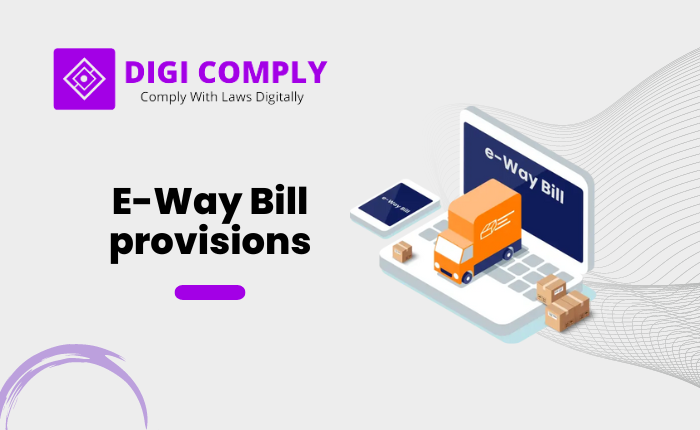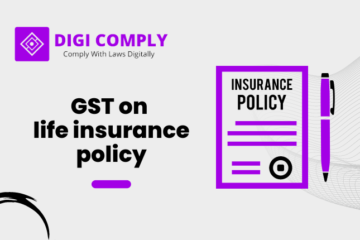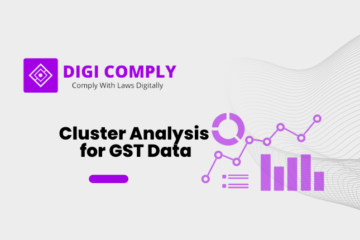The e-way bill is an electronically generated document used in India for tracking the movement of goods from one place to another. It is a crucial mechanism to ensure seamless transportation and prevent tax evasion. Here’s an in-depth look at the e-way bill system:
Purpose and Benefits of E-Way Bill
- Efficient Tracking: The e-way bill system enables efficient tracking of goods during transit, ensuring their timely and secure delivery.
- Tax Evasion Prevention: By monitoring goods movement, the e-way bill system helps prevent tax evasion and enhances tax compliance.
- State Boundary Check-post Elimination: The digital interface eliminates the need for state boundary check-posts, reducing delays and ensuring smooth inter-state transportation.
E-Way Bill Generation Process under Rule 138
- Two Parts of E-Way Bill: The e-way bill consists of two parts – Part A with invoice and goods details, and Part B with transporter information.
- Primary Responsibility: The registered person (supplier or recipient) is primarily responsible for generating the e-way bill. If they don’t, the transporter can generate it.
- Voluntary Generation: E-way bills can also be generated voluntarily, even if the value of goods is below Rs. 50,000.
- Part-B Not Mandatory for Short Distances: Part-B is not mandatory for goods transported up to 50 km within a state between the consignor and transporter or from transporter to consignee. However, it should be updated if goods are transferred between vehicles.
- Multi-Vehicle Option: When goods are transported in multiple vehicles on a single invoice, the transporter can update Part B using the multi-vehicle option.
- Assignment of E-Way Bill: The consignor, recipient, or transporter can assign the e-way bill number to another person to update Part B.
- Consolidated E-Way Bill: Transporters can indicate serial numbers for each e-way bill generated for multiple consignments in one conveyance, creating a consolidated e-way bill (EBW-02).
- E-Way Bill for Different Modes of Transport: E-way bills for railway, air, or vessel transport can be generated by the registered person (supplier or recipient) by furnishing Part B on the common portal.
- Cancellation Rules: E-way bills can be canceled within 24 hours of generation, except if already verified in transit.
Special Scenarios and E-Way Bill
- Bill-To-Ship-To Model: In the “Bill-to-Ship-to” model, only one e-way bill is required by either “A” or “B” when “A” orders “B” to deliver goods directly to “C” on their behalf.
- Linking with GSTR-1: E-Way Bill and GSTR-1 are linked through information provided in Part A of FORM GST EWB-01 on the common portal.
- Validity Across States: E-Way Bill generated under 138 GST rules holds validity across all states and union territories, ensuring the seamless movement of goods throughout the country.
Documents Required During Goods Transportation
The person in charge of the conveyance must carry the following documents:
1. Tax Invoice, Bill of Supply, or Delivery Challan as required
2. Copy of the E-Way Bill or E-Way Bill number or an E-Way Bill mapped to an RFID device
3. In the case of e-invoice, the IRN (Invoice Reference Number) may also be provided to the proper officer.
Goods Exempt from E-Way Bill Requirement
The e-way bill is not mandatory for the transportation of certain goods, including:
- Alcoholic liquor
- Petroleum products (crude, diesel, petrol, natural gas, and aviation fuel)
- Goods under Schedule III of CGST Act
- Transit cargo to Nepal/Bhutan
- Goods moved by the Ministry of Defence
- Supply of heavy water to NPCIL
- Government transportation by rail
- Movement of empty cargo containers
- Goods transported up to 20 km for weighbridge purposes
- Empty LPG cylinders used for packing (not for supply)
- Goods specified in the Annexure to the rules.
If You have any queries then connect with us at support@legalsuvidha.com or info@digicomply.in & contact us & stay updated with our latest blogs & articles





